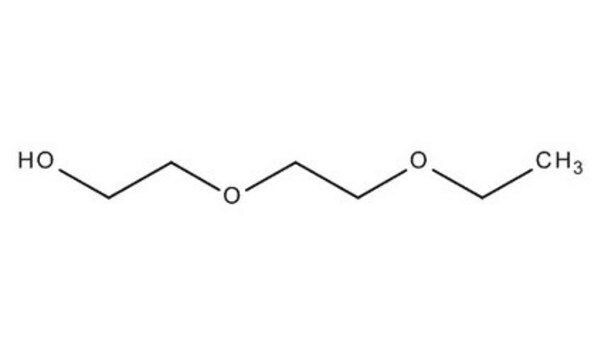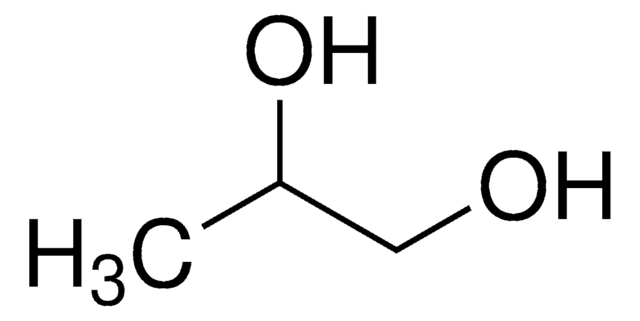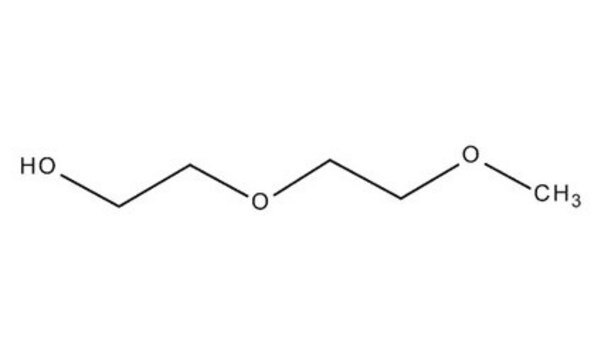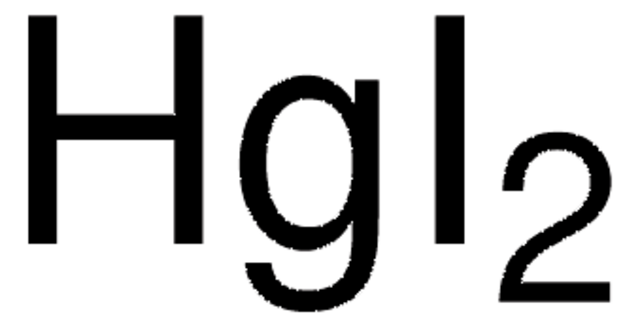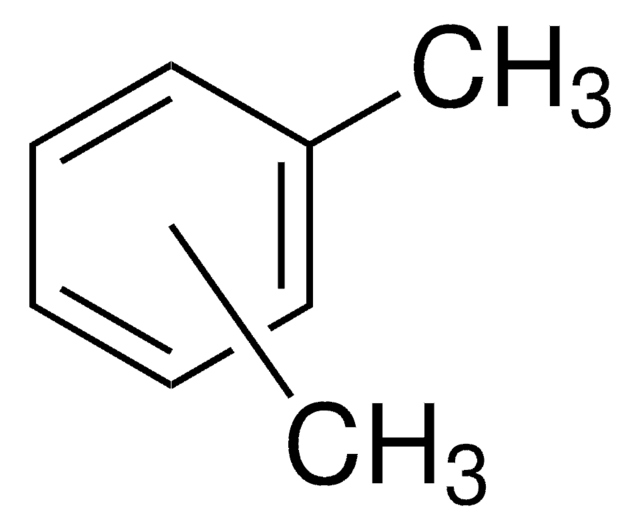8.03129
Diethylenglykol-Monobutylether
for synthesis
Synonym(e):
Diethylenglykol-Monobutylether, 2-(2-Butoxyethoxy)-ethanol, Butyldiglycol, Butylcarbitol
About This Item
Empfohlene Produkte
Dampfdruck
<1 hPa ( 20 °C)
Qualitätsniveau
Assay
≥98% (GC)
Form
liquid
Selbstzündungstemp.
210 °C
Wirksamkeit
5660 mg/kg LD50, oral (Rat)
4120 mg/kg LD50, skin (Rabbit)
Expl.-Gr.
0.7-5.9 % (v/v)
pH-Wert
7 (20 °C)
kinematic viscosity
6.1 cSt(20 °C)
bp
226-234 °C/1013 hPa
mp (Schmelzpunkt)
-68 °C
Übergangstemp.
flash point 105 °C
Dichte
0.95 g/cm3 at 20 °C
Lagertemp.
2-30°C
InChI
1S/C8H18O3/c1-2-3-5-10-7-8-11-6-4-9/h9H,2-8H2,1H3
InChIKey
OAYXUHPQHDHDDZ-UHFFFAOYSA-N
Verwandte Kategorien
Anwendung
- Biopolymeric Anticorrosion Coatings from Cellulose Nanofibrils and Colloidal Lignin Particles.: This study describes the development of a novel anticorrosion coating made from biopolymers, including a discussion on the use of diethylene glycol monobutyl ether as a solvent to disperse components uniformly (Dastpak et al., 2021).
- The investigation of structural and thermosensitive properties of new phosphazene derivatives bearing glycol and amino acid.: This research article explores the properties of phosphazene derivatives that incorporate glycol structures, detailing methods like NMR and IR spectroscopy where diethylene glycol monobutyl ether may be employed as a solvent in the synthesis process (Uslu and Güvenaltın, 2010).
- Diethylene glycol mono butyl ether concentrations in room air from application of cleaner formulations to hard surfaces.: This study measures the air concentrations of diethylene glycol monobutyl ether in indoor environments following its application in cleaning agents, demonstrating its volatility and potential inhalation exposure during use (Gibson et al., 1991).
Hinweis zur Analyse
Dichte (d 20 °C/ 4 °C): 0,951 – 0,954
Wasser (K. F.): ≤ 0,20 %
Peroxid (als H₂O₂): ≤ 0,05 %
Identität (IR): entspricht
Signalwort
Warning
H-Sätze
Gefahreneinstufungen
Eye Irrit. 2
Lagerklassenschlüssel
10 - Combustible liquids
WGK
WGK 1
Flammpunkt (°F)
210.2 °F - closed cup
Flammpunkt (°C)
99 °C - closed cup
Zulassungslistungen
Zulassungslistungen werden hauptsächlich für chemische Produkte erstellt. Für nicht-chemische Produkte können hier nur begrenzte Angaben gemacht werden. Kein Eintrag bedeutet, dass keine der Komponenten gelistet ist. Es liegt in der Verantwortung des Benutzers, die sichere und legale Verwendung des Produkts zu gewährleisten.
EU REACH Annex XVII (Restriction List)
Analysenzertifikate (COA)
Suchen Sie nach Analysenzertifikate (COA), indem Sie die Lot-/Chargennummer des Produkts eingeben. Lot- und Chargennummern sind auf dem Produktetikett hinter den Wörtern ‘Lot’ oder ‘Batch’ (Lot oder Charge) zu finden.
Besitzen Sie dieses Produkt bereits?
In der Dokumentenbibliothek finden Sie die Dokumentation zu den Produkten, die Sie kürzlich erworben haben.
Kunden haben sich ebenfalls angesehen
Unser Team von Wissenschaftlern verfügt über Erfahrung in allen Forschungsbereichen einschließlich Life Science, Materialwissenschaften, chemischer Synthese, Chromatographie, Analytik und vielen mehr..
Setzen Sie sich mit dem technischen Dienst in Verbindung.
